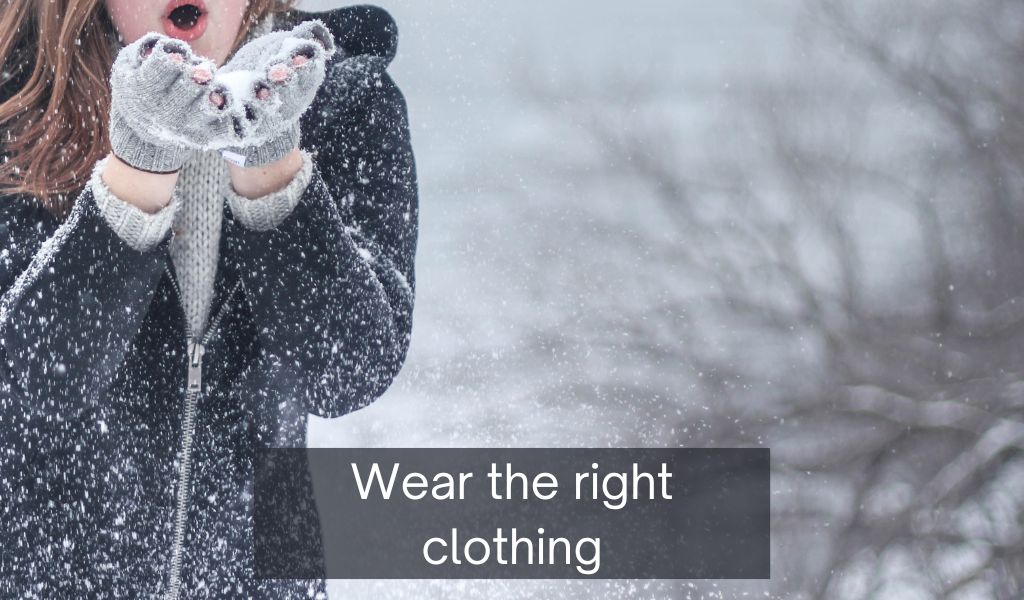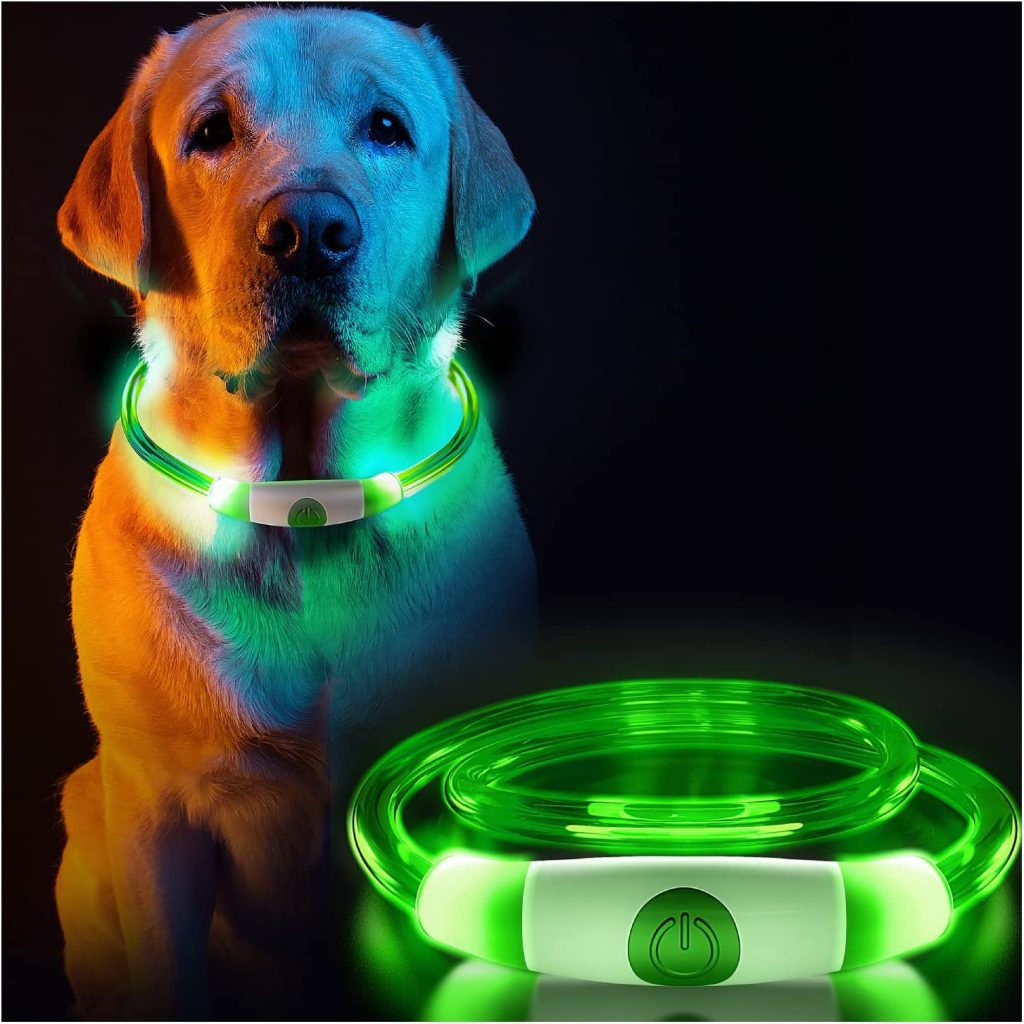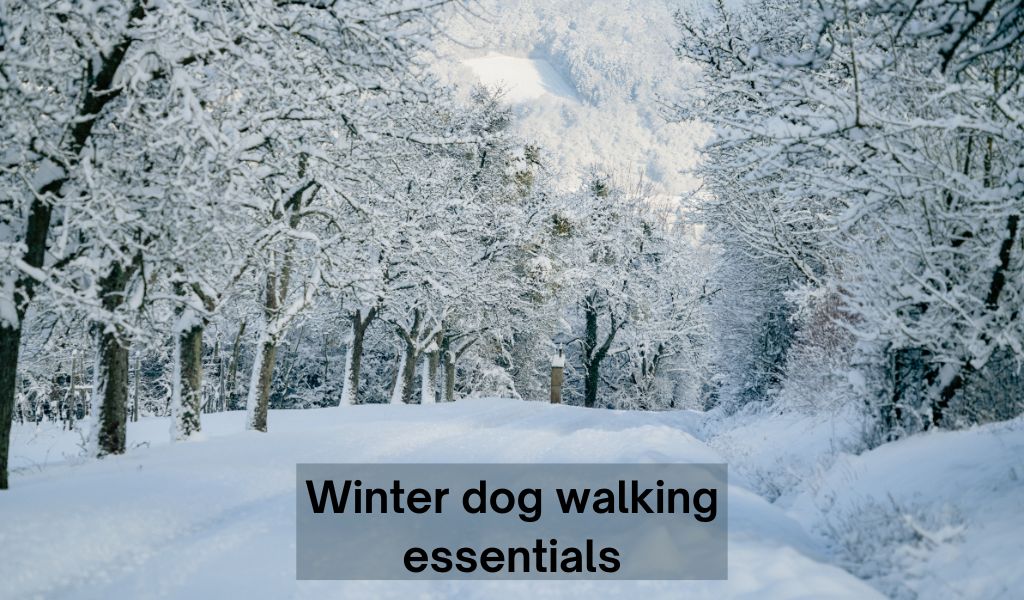Walking your dog in winter can be a challenge, but with the right preparation it can be safe and enjoyable for both you and your pet.
Here are some tips to help make winter walks with your dog as safe and comfortable as possible.
The winter weather can be tough on dogs, so it’s important to take precautions when walking them in winter. Dress your dog in a waterproof coat, boots and/or paw protectors to keep them warm and dry. Wear the right gear yourself so that you are protected from the elements as well.
Make sure that you have everything you need
Before heading out, make sure you have everything you need with you on the walk.
As well as the usual lead and whistle make sure that you are both protected from the weather.
Some treats, for both of you can easily fit in your pockets and may be useful if it gets chilly.
Don’t forget water – either carry a bottle with you or take a collapsible bowl so they can hydrate along the way.
A torch is also helpful when walking at night as winter days are shorter.

Wear the right clothing for cold weather when walking your dog
In the coldest months of winter, dressing appropriately for outdoor walks with your dog is essential.
Not only will you and your pet enjoy the exercise more if you are both warm and comfortable, but proper clothing can also provide much-needed protection from the elements.
For starters, wear layers of insulated clothing that fit comfortably so that you retain maximum mobility.
Be sure to wear waterproof materials like a water-resistant jacket in order to keep out moisture and wind.
Wear a warm hat or ear warmers on your head to protect against extreme cold and wind chill, and be sure to cover any vulnerable extremities like hands with gloves or mitts.
Wearing boots with good insulation or thick thermal socks can make all the difference on those frigid days.
Some key items to consider include:
– a water-resistant jacket
– a warm hat or earwarmers
– gloves or mittens
– boots with good insulation
Winter dog walking gear
Dress your dog in the right clothes for winter weather
Not all dog breeds need extra layers during cold months, but if your pet does require them, it’s essential to dress your dog for the weather.
Specialized winter jackets or sweaters made of breathable fabrics like wool or fleece are designed specifically to provide warmth without restricting movement.
Hoods and waterproof raincoats are also great options if you plan to take your pooch outside in a heavier downpour.
Consider adding reflective tape to any outerwear as well; this helps drivers detect your pup when you’re out after dark.
Finally, make sure that all collars, harnesses, and jackets fit tightly yet comfortably around your dog’s body and don’t irritate the skin.
Make sure your dog is well-hydrated and has plenty of water to drink
When winter temperatures drop, your pup’s water intake may decrease.
To stay hydrated during winter walks and other outdoor activities, make sure to provide plenty of fresh water before and after each outing.
If you are walking a long way then you may want to bring along a collapsible bowl so your pup can take frequent sips of water.
Avoid taking your dog out for walks during extreme weather conditions
Winter weather can be unpredictable, so while it’s important to allow your pup to enjoy winter activities outdoors, make sure to avoid taking them out in extreme winter conditions.
Heavy snow or icy roads and sidewalks can lead to dangerous situations for both you and your dog so only take them out when the winter weather is favorable.
If possible, stick to walking during the day when temperatures tend to be higher and the sun provides additional warmth.

Exercise caution when walking your dog on icy or slippery surfaces
Be aware of winter hazards
Winter weather can also bring about winter hazards that you and your pup should be aware of.
Make sure to avoid walking through puddles or areas near frozen lakes, ponds, or rivers as these may contain hidden patches of thin ice that could give way under the weight of both you and your pet.
Also keep an eye out for slips on icy surfaces, particularly when climbing stairs or hills. Always have a plan in place should either you or your pup slip while on winter walks.
Finally, watch out for antifreeze spills; this is a winter hazard that can be toxic to pets if swallowed. Clean up any spills right away and consider using winter-safe antifreeze whenever possible.
Have a plan for what to do if your dog gets lost
Dogs can and do get lost and, in the winter when days are shorter, you can quickly run out of light to search for your pet.
If you are not confident that your dog will return when called or whistled then keep him on his lead while you are out.
You can also consider one of the dog GPS tracker devices that will help you to locate your dog if you become separated.
Make sure you have all the necessary supplies for winter dog walks
Finally, winter walks require more than just winter-appropriate clothing and a plan for worse case scenarios.
Bring along treats, waste bags, an extra leash, a first aid kit, and any medications your pet may need to ensure that you’re prepared for every winter outing.
Final Words
Winter dog walking can be a great way to keep your pup healthy and active during the winter season.
However, winter weather brings its own set of threats that you and your pet should be aware of.
Make sure you are fully prepared with winter clothing, water, supplies, and an emergency plan before taking your pup out for winter walks.
By following these tips and advice for winter dog walking, you’ll both enjoy every winter outing together safely.




